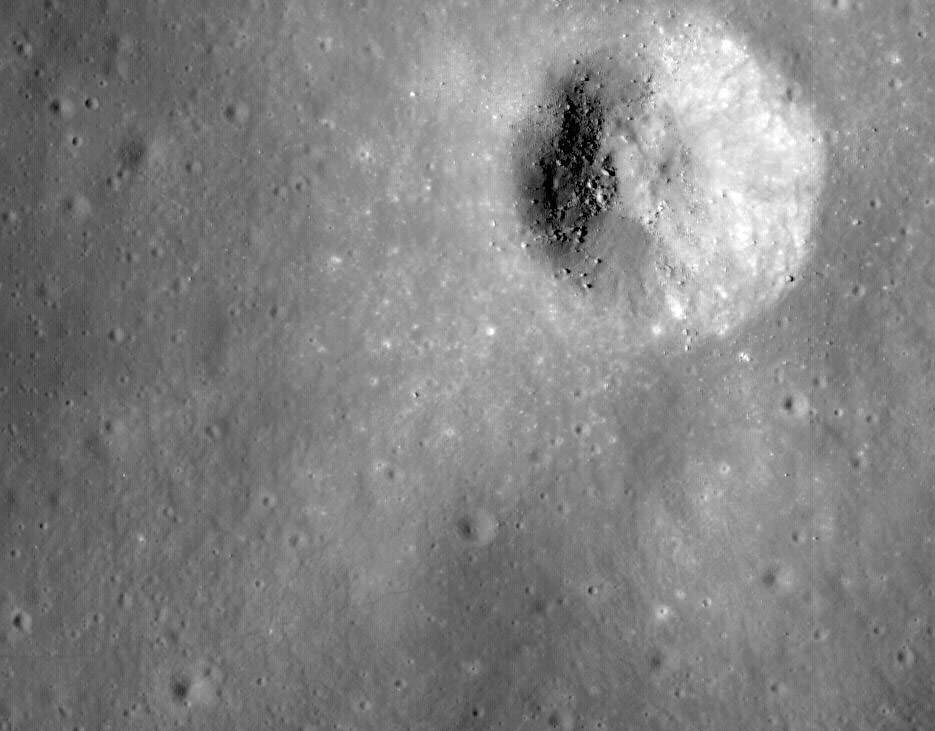During the second EVA of the Apollo 14 mission on the moon, astronauts Alan Shepard and Edgar Mitchell had a goal of hiking to the rim of nearby Cone Crater in the Fra Maura highlands. But the steep terrain made the going difficult, elevating the astronauts' heart rates. Additionally, without landmarks it was difficult to judge distances. With the rolling terrain, filled with similar-looking ridges, Shepard and Mitchell couldn't really tell if they were close to the rim or not.
Realizing time and available oxygen were getting short, Mission Control told the astronauts to head back to the Lunar Module, and although disappointed, the astronauts agreed. But how close did they actually come to the crater? No one knew for sure, until now.
Annotated figure showing the positions of various landmarks surrounding the Apollo 14 landing site. The small white arrows highlight locations where the astronauts' path can be clearly seen [NASA/GSFC/Arizona State University].
One of the latest images from the Lunar Reconnaissance Orbiter shows new details of the Apollo 14 landing site. If you look closely at the image above, visible are the tracks from the astronauts steps and their three-wheeled MET cart, and you can clearly follow the trail of the astronauts on their "radial traverse." Click the image for larger version if you're having trouble seeing the tracks. Their tracks stop just 30 meters short of the rim, near a dark spot just to the lower left of the crater, which might be Saddle Rock, shown in the image below. Shepard and Mitchell never realized just how close they really were.
[caption id="attachment_37873" align="alignleft" width="630"]
This photograph shows Saddle Rock, the largest boulder seen on this mission. Named for its shape, Saddle Rock is 4.5 meters across. Credit: NASA
[/caption]
On the
LROC (Lunar Reconnaissance Orbiter Camera) website
, Samuel Lawrence notes that more and different detail is visible on this image as opposed to the initial images released prior to the Apollo 11 anniversary in July because the lighting is different. "This time the Sun is 24 degrees higher above the horizon providing a clearer view with fewer shadows. Albedo contrasts are greater, and more clearly show soil disturbances from landing, astronaut surface operations, and blast off."
[caption id="attachment_37874" align="aligncenter" width="578"]
The MET cart from Apollo 14. Credit: NASA
[/caption]
Lawrence notes how the term "radial traverse" does not quite do the crew of Apollo 14 justice.
"Their journey sounds like a stroll in the park, however the reality is quite the contrary. The hike up Cone crater was quite challenging. For the first time, astronauts traveled out of the sight of their lunar module while hiking uphill over 1400 meters with only a poor map, dragging the tool cart (MET), and wearing their bulky spacesuits. It was an amazing feat that the two astronauts made it to the top of Cone ridge and acquired all their samples. They ended up about 30 meters shy of peering into Cone crater itself, surely a disappointment at the time, but absolutely no reflection on the success of the traverse and the scientific results gleaned after the mission."
Source:
LROC
 Universe Today
Universe Today
